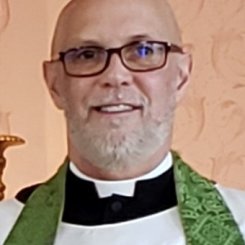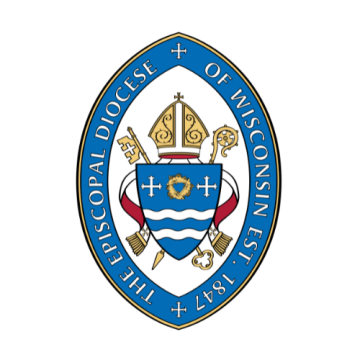Share a story
The Church of the Precious Blood was begun as the mission of "Le Bon Pasteur" (The Good Shepherd) sometime in 1885 by the Reverend Joseph René Villatte. The original location of Fr. Villatte's mission was three miles south of the settlement of Little Sturgeon fronting on the same bay, and consisted of a two-room house: one room for living quarters, the other serving as the chapel.
The current church building was built in 1888 and dedicated to "The Precious Blood" to emphasize the fact that, unlike Roman Catholic practice of the time, communion was given in both kinds. The building project was supervised by Fr. Villatte, with funding largely provided by the Episcopal Church. Funds for the purchase of the land were given by Mrs. Chauncey Waterbury of Brooklyn, New York, as a memorial to her husband. A rectory and barn once occupied this site as well. Ownership of the land, the building and its contents have always been vested in the trustees of the Episcopal Diocese of Fond du Lac.
The relationships of Fr. Villatte, Precious Blood Church, the Roman Catholic and Old Catholic Communions, and the Diocese of Fond du Lac are complex and fascinating. Not surprisingly, there has oftentimes been much misinformation as well.
Suffice it to say that, in the time before the arrival of the Roman Catholic Norbertine Fathers, the Belgian settlers in the Little Sturgeon area (most of whom were Roman Catholics) had been all but forgotten. Mass was said perhaps only once in three months, the result being that many had begun to drift. Villatte, formerly a Roman Catholic religious who had become a pastor of a French-speaking Protestant congregation in Green Bay, was led in some way to approach the first Episcopal Bishop of Fond du Lac, John Henry Hobart Brown, about this matter. If he were to be received into the Episcopal Church, he proposed to minister to and win these people back to the Catholic Faith, albeit not the Roman Catholic Church.
Villatte was sent to Nashotah House Seminary to begin his preparation for ordination. Bishop Brown decided that the ordination itself would be done in Bern, Switzerland by Bishop Herzog of the Old Catholic Church. Bishop Brown's decision was guided by the advice of several other Episcopal bishops, as well as by the unanimous opinion of the seminary faculty. It was doubted that the Belgians at that time would understand or accept the catholicity of the Episcopal Church.
Based on the grounds of Anglicanism's intercommunion with the Old Catholic Churches in Europe, however, it seemed an excellent opportunity for the Episcopal Church to minister to these people in such a way as would be outwardly familiar to them. So, while Fr. Villatte was indeed ordained by the Old Catholic Church, and while Precious Blood Church was known to be an Old Catholic congregation both in name and ritual, it had always been a missionary outreach of the Episcopal Diocese of Fond du Lac.
Fr. Villatte went on to establish other Old Catholic congregations in the area (e.g. St. Mary's, Duvall), which were not official ministrations of the Diocese of Fond du Lac, and all of which are now defunct. An attempt was even made to establish an Old Catholic Seminary in Sturgeon Bay, but this was never realized. Following his removal from our communion in 1892, Fr Villatte lived for a period of time at Duvall, during which time he also attempted to establish his own cathedral (St. Louis) in Green Bay. After foreclosure on these properties Fr. Villatte left the area. The Duvall congregation was ultimately received into the Episcopal Church as a congregation of this Diocese. (St. Mary's was closed and the building dismantled in 1940). St. Louis in Green Bay disbanded, and the building was purchased by the Roman Catholic Diocese to become the first building for Our Lady of the Angels Church.
Contrary to popular belief, Blessed Sacrament Episcopal Church in Green Bay was not established by Villatte, although it was conceived as a mission to ethnic Belgians, many of whom relocated to that city from Duvall.
The priests to succeed Fr. Vlllatte in residence at Precious Blood were Fr. J.B. Gauthier, Fr. deVillareal, and Fr. Louis Lops, all of whom were ordained by Old Catholic bishops. These priests remained faithful to their ministries within the Episcopal Church. Frs. Gauthier and de Villareal also were to serve at Blessed Sacrament, Green Bay following its establishment in 1908, as well as at St. Mary's, Duvall, which was ultimately yoked to the former. Also serving intermittently was Fr. A.P. Curtiss, who is said to have given the rood and figures sometime after 1900. Fr. Lops remained in residence at Precious Blood until 1922.
Since then, the church has been supplied predominantly by priests from St. Agnes, Algoma. Precious Blood Church remains a unique testimony to the breadth of the Anglican experience. A traditional Assumption Festival, celebrated annually, draws pilgrims from all over Wisconsin, and continues as an effective witness to the Catholic tradition in Anglicanism.
Many have remarked on the charm of this building, which is lovingly cared for by those who worship here regularly. Serious, historically-informed, and sensitive restoration continues. Your prayers, as well as any monetary gifts toward the full realization of this goal, would be welcomed and gratefully acknowledged.
Worship times
9696 County Rd C
Gardner Township, WI 54204-9783
United States



